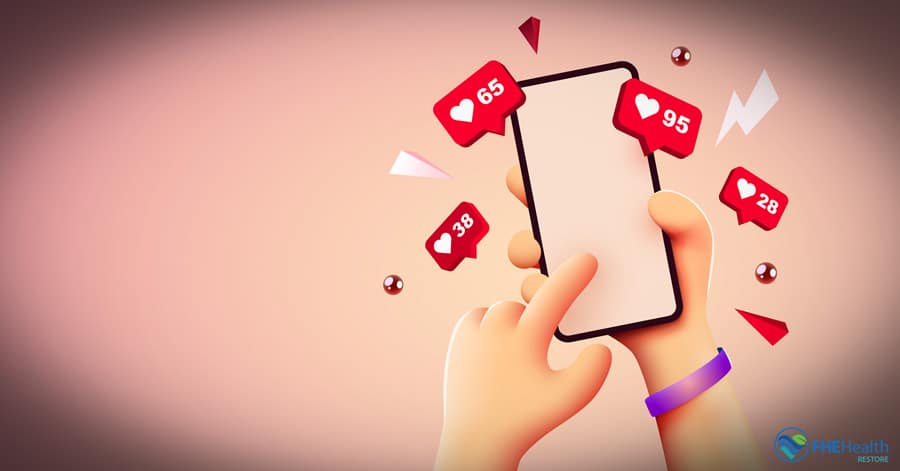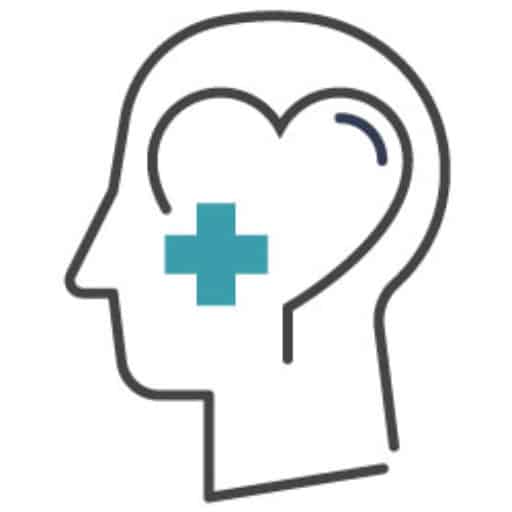“Like, share and follow” is a familiar phrase in modern culture, the rallying cry of social media users and super users — or influencers — alike. There are numerous positive aspects of social media, such as reconnecting with old friends and organizing activism, but what about the darker side of all that networking?
What Is Social Media Addiction?
Social media addiction is a series of compulsive behaviors revolving around the use of these apps and sites that can vary in intensity. While social media isn’t addictive in the same ways a chemical dependency would be, that doesn’t mean overuse isn’t concerning. The link between social media and dopamine can still make these apps and websites detrimental to both a healthy lifestyle and in-person relationships.
In a 2019 study, 45% of respondents aged 18-22 reported that the phrase “I am addicted to social media” described them either “somewhat” or “completely.” In a society where the lines of communication and entertainment are deeply blurred, it can be challenging to pinpoint when idle scrolling becomes a compulsion, particularly for users in this age group.
For some people, the physical behaviors of picking up, unlocking and checking social media on their phones has become so ingrained that there are non-powered and minimally equipped “dummy” phone products on the market designed to help break that dependence.
Social Media and Dopamine
Social media is all about staying in touch and communicating with friends, family and even employers. It can’t be all bad, right? When it comes to dopamine, however, frequently checking social media could be doing yourself more harm than good.
Why is social media addictive? For one, it’s a hobby with “low barrier entry.” In other words, it takes only a matter of seconds to share a thought, post an image or like someone else’s post. That ease and the little jolt of happy, satisfied dopamine chemicals that chase a like, share or follow tell your brain this is something good — remember and return to it.
With the speed at which social media moves and the tendency for online social networks to grow incredibly wide, this signaling system evolves into a never-ending loop. You check your social media, get a little dopamine, feel satisfied, put down your phone. Then, seeking that feeling again, you’re checking your phone a little more frequently. Then a little more.
Eventually, you may find yourself struggling to keep your phone put away when socializing with real-life friends. Your friends can’t offer the instant, visible feedback of social media interaction, after all.
Is Social Media Addiction Different From Chemical Dependency?
Even recognizing that dopamine is a contributing factor to this behavior, it’s important to remember that social media addiction and chemical dependency aren’t the same thing. Dopamine is an important part of our brain and body deciding what’s best for us, and social media isn’t something our brains were originally designed to process.
Chasing this sensation is what leads to constantly checking and tapping at our phones and our feelings of panic, frustration or sadness when we’re unable to do so. While some people are capable of rejecting that compulsion, others might struggle or may not even be aware they’re facing a potential addiction.
It can be difficult to recognize how much is too much when everything from advertising to checkout lines encourages users to pick up and use their smartphones to join a product or service. Add to that the fact that social media sites and apps are designed to, like most products, capture as much of our attention as possible for as long as possible and it’s easy to understand why people are addicted to social media.
Everything from the color and shape of digital icons to the particular tone or chime used to signal a message or social media alert is carefully crafted to capture our attention fully. Even the physical behaviors associated with certain apps, such as scrolling for Facebook and TikTok or swiping left or right on dating apps like Tinder, is designed to train muscle memory and familiarity.
Consider that every available sensory aspect of app interaction on a smartphone — visual, audible and tactile — is targeted to trigger curiosity and response. It’s easy to see why most Americans aged 18 and over check their smartphones more than 262 times a day.
Why Are Experts Concerned About Social Media Addiction?
Social media addiction can be a more insidious behavioral addiction to treat because smartphones are such an universal part of modern life. Used for everything from communicating with loved ones to ordering lunch, just “putting the phone down” isn’t always an option.
Even deleting social media apps is an action that’s easily reversed in a few taps, so where can social media addicts turn to for help? Professional help is available for those who struggle to stop updating and scrolling, even though the problem is a relatively new one in the broader sense of behavioral addictions.
The first step to dealing with a social media addiction is similar to the way many other addictions are addressed: the admission that the problem exists. If you notice that you struggle to put your phone away in inappropriate situations, such as mid-conversation with colleagues or while driving, it may be an indicator that a deeper look into your habits and behaviors is necessary.
Your ability to judge your potential struggle with social media dopamine hits may be influenced by your relationship with them in the first place, which is why getting an expert’s opinion is an excellent first step. You deserve to “like” your life away from screens, to “follow” your own dreams without needing to compulsively post them and to “share” your life with loved ones with face time, not FaceTime.
If you’re concerned that the way you interact with social media may be harming your relationships, your job, your happiness or your mental health, contact Restore Mental Health today to find out the diagnosis and treatment options available to you for coping with social media addiction.



